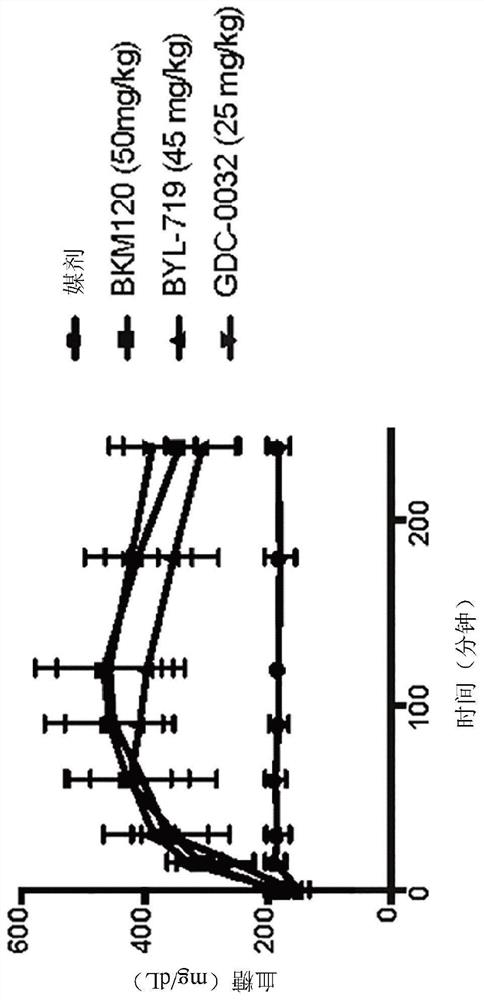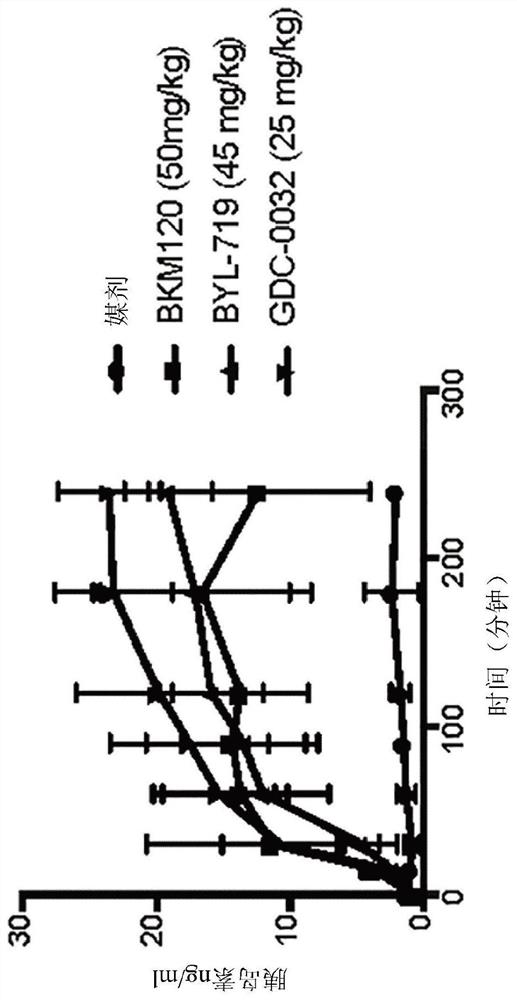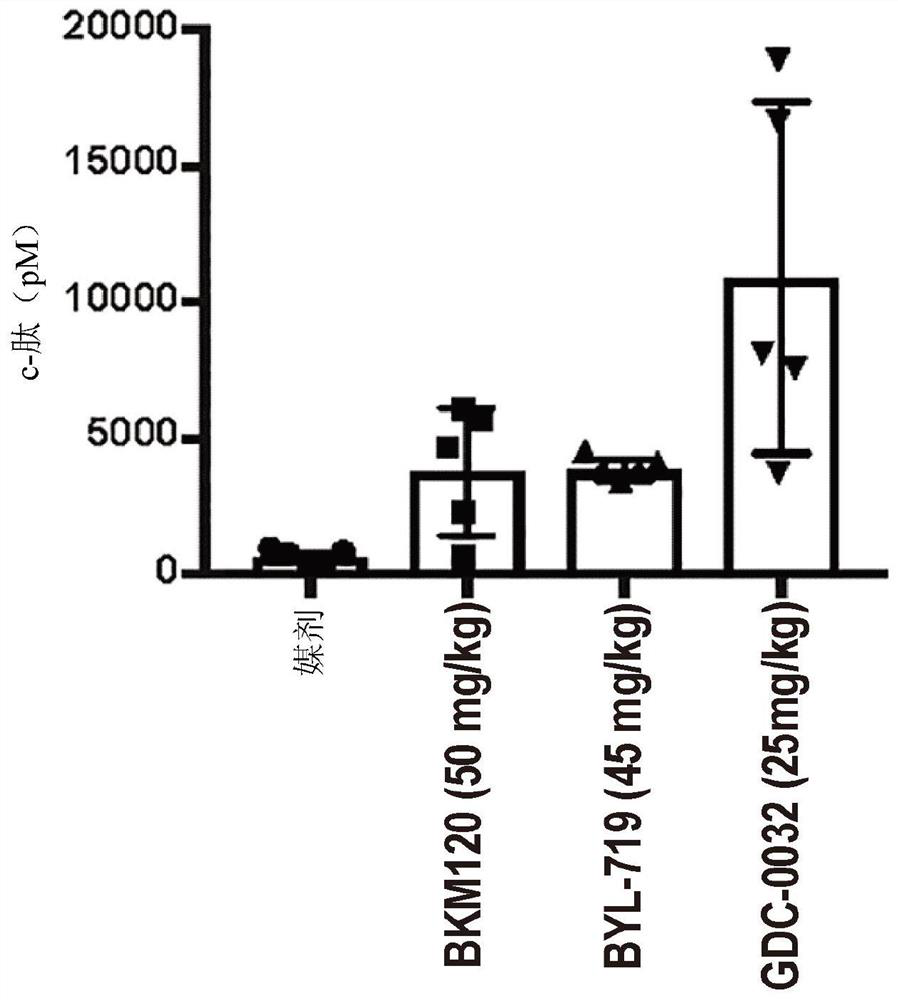Combination therapy for pi3k-associated disease or disorder
An OSI-906, inhibitor technology, applied in the field of increasing insulin receptor/PI3K/AKT/mTOR pathway inhibitors
- Summary
- Abstract
- Description
- Claims
- Application Information
AI Technical Summary
Problems solved by technology
Method used
Image
Examples
example
[0160] The following examples are given to illustrate various embodiments of the disclosure and are not meant to limit the disclosure in any way. Variations therein and other uses encompassed within the spirit of the disclosure as defined by the scope of the claims will occur to those skilled in the art. Appendix A provides a further description of the experimental work involved in the development of the methods and compositions described herein.
[0161] overview
[0162] Gain-of-function mutations in PIK3CA, which encodes insulin-activated phosphoinositide-3-kinase (PI3K), and loss-of-function mutations in PTEN, the phosphatase that degrades phosphoinositide lipids produced by PI3K, are among the most frequent events in human cancers . However, pharmacological inhibition of PI3K using different classes of inhibitors has resulted in variable clinical responses in humans, raising the possibility that there are intrinsic resistance mechanisms to PI3K inhibition. Here, the in...
example 1
[0165] Example 1: Disruption of systemic glucose homeostasis using therapeutic doses of compounds targeting various kinases in the insulin receptor / PI3K / mTOR pathway
[0166] Hyperglycemia is largely treated as a treatment-related complication and only needs to be managed in the subset of patients in whom hyperglycemia persists. Due to the body's normal blood glucose regulation, patients treated with these agents develop some degree of systemic hyperinsulinemia as the pancreas attempts to normalize serum glucose levels. Since insulin is a potent stimulator of PI3K signaling in tumors and can have profound effects on cancer progression, the inventors hypothesized that treatment-induced hyperinsulinemia limits the therapeutic potential of agents targeting the PI3K pathway.
[0167] Wild-type mice were treated with therapeutic doses of compounds targeting multiple kinases in the insulin receptor / PI3K / mTOR pathway, including inhibitors of INSR / IGFR, PI3K, AKT, and mTOR, after trea...
example 2
[0169] Example 2: Insulin stimulates PI3K signaling in the context of PI3K inhibition
[0170] To test whether these spikes in insulin stimulate PI3K signaling in the presence of PI3K inhibition, KPC cells were treated in vitro with PI3K inhibitors in the presence or absence of 10 ng / ml insulin, which was 15 ng / ml after drug administration. - the level observed in mice within 30 minutes ( Figure 1D). This level of insulin is sufficient to partially rescue PI3K signaling in the presence of PI3K inhibitors, as shown by partial reactivation of phosphorylated AKT (pAKT) and almost complete reactivation of phosphorylated S6 (pS6), a phosphorylated S6 is a reporter molecule for growth signaling through the mTORC1 complex ( Figure 2A ). Furthermore, this enhanced signaling was associated with a partial restoration of cell proliferation ( Figure 2B-2C ).
[0171] Similar effects of insulin-stimulated proliferation were observed in various other tumor cell lines and patient-der...
PUM
 Login to View More
Login to View More Abstract
Description
Claims
Application Information
 Login to View More
Login to View More - R&D
- Intellectual Property
- Life Sciences
- Materials
- Tech Scout
- Unparalleled Data Quality
- Higher Quality Content
- 60% Fewer Hallucinations
Browse by: Latest US Patents, China's latest patents, Technical Efficacy Thesaurus, Application Domain, Technology Topic, Popular Technical Reports.
© 2025 PatSnap. All rights reserved.Legal|Privacy policy|Modern Slavery Act Transparency Statement|Sitemap|About US| Contact US: help@patsnap.com



